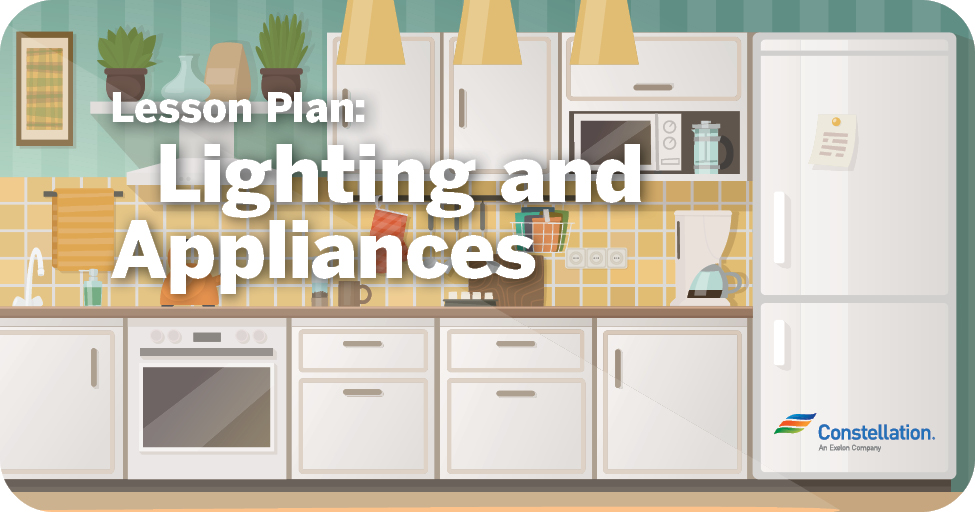
- Category:
Energy Efficiency -
Last updated:
March 28, 2022
Lesson Plan: Lighting and Appliances
This week’s lesson focuses on two items within the home that use a good amount of energy and are sometimes easy to control. According to the U.S. Department of Energy’s Energy Information Administration, lighting accounts for roughly 8 percent of a home’s energy expenses. Appliances (including water heating and refrigerators) can account for nearly 50 percent! This lesson aims to introduce students and their families to lighting and appliances in the home. Students will revisit the text from the Conservation-themed lesson as well as their surveyed behaviors and calculations from the previous lessons. Students of all ages and abilities can complete the same reinforcement activities. Then students or families can work together on two activities that will showcase the benefits of switching out a bulb and using efficient technologies when the time comes for replacing.
Looking for more home energy activities? We’re pleased to work with The National Energy Education Development Project (NEED), to deliver these fun activities. Be sure to check out their library of resources, and their specialized collection of energy-themed distance/at-home learning activities. All activities are totally free for use at home or school, and accessible by visiting their website, www.NEED.org.

- Background reading: Primary Infobook, Saving Energy
*Primary reading is structured with the student reader page first, and the teacher/adult page second. Younger or less advanced readers can read along with the student pages, and the teacher pages may be read aloud to them. Advanced readers may be able to read most on their own.
- Printable Coloring sheet
- Printable Activity: Energy Consumption Collage

- Background reading: Elementary Energy Infobook, Saving Energy
- Printable Coloring sheet
- Printable Activity: Energy Consumption Collage

- Background reading: Intermediate Energy Infobook, Saving Energy
- Printable Coloring sheet
- Printable Activity: Energy Consumption Collage

- Background reading: Secondary Energy Infobook, Efficiency and Conservation
- Printable Coloring sheet
- Printable Activity: Energy Consumption Collage

- These lessons will wrap up with an exploration of lighting in your home and some quick lighting math in Lighting and This is Your Light. Look at your lighting technologies as a household. Is there an opportunity to switch to a more efficient bulb type? What costs would be incurred, and how quickly would those costs be recouped? A lot of times, we’re taught the adage “if it ain’t broke; don’t fix it.” However, in completing this quick math activity, students and families might see quickly that a switch could save money quickly. The second activity, (R)amp Up the Efficiency helps students look at costs with a slightly different spin. If the time comes to replace a major appliance, consumers are often programmed to pick the best buy. In this activity, students will crunch the numbers to determine life cycle cost and show how spending a little more can sometimes save you money in the long run, or even short term!
Additional support links:
- https://www.energy.gov/energysaver/energy-saver
- https://switchon.org/ (Free signup for all video clips)
- https://www.eia.gov/energyexplained/
- https://www.eia.gov/kids/
Spring Lesson Plans:
- Lesson Plan 1: Energy Basics and Energy Sources
- Lesson Plan 2: Electricity and Electricity Generation
- Lesson Plan 3: Conservation at Home
- Lesson Plan 4: Wind and Natural Gas
- Lesson Plan 5: Solar Energy
- Lesson Plan 6: Understanding Your Energy Bill
- Lesson Plan 7: Measuring Your Electricity Consumption
Fall Lesson Plans:
- Lesson Plan 1: Biomass
- Lesson Plan 2: Hydropower
- Lesson Plan 3: Water Conservation
- Lesson Plan 4: Climate Change and Energy Conservation
- Lesson Plan 5: Heating and Cooling




